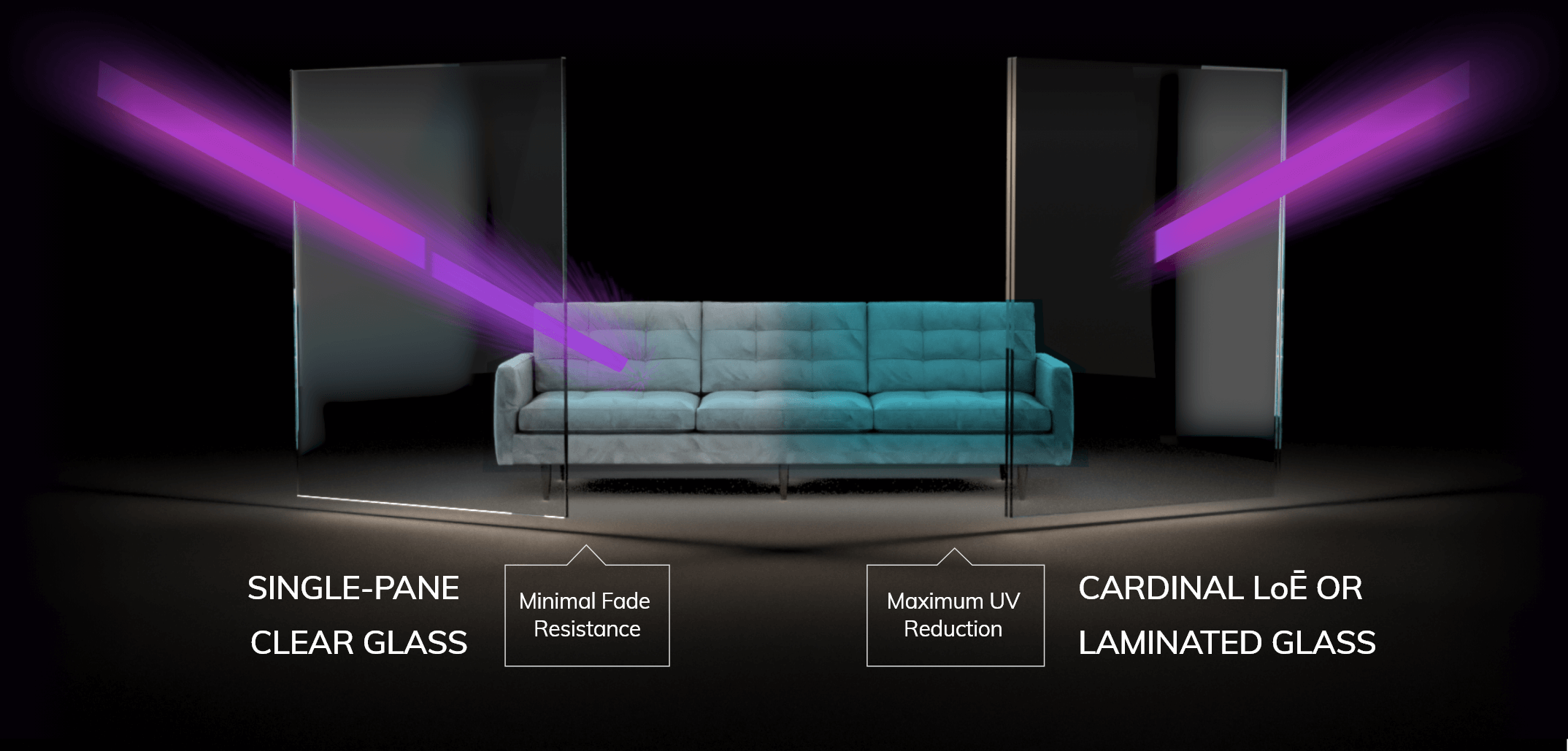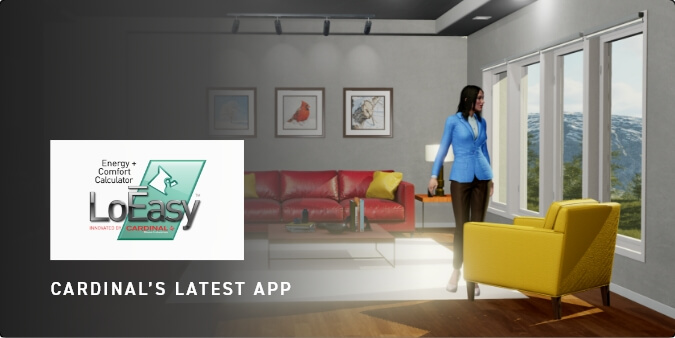Fade Resistance
Last Updated: July 31, 2024
Share Article
Fade Resistance
Fade Resistance
Fade resistance refers to the ability of materials, including window glass, to resist discoloration, deterioration, or change in appearance due to exposure to light, particularly ultraviolet (UV) radiation, and other environmental factors. It is an important consideration in window glass selection, especially for applications where protecting interior furnishings, artwork, and other materials from fading is a priority.

Figure: Fade resistance
There are two common ways of measuring fade resistance in window glass: UV transmission and ISO-CIE (Tdw-ISO) measurements.
UV Transmission: UV transmission measures the amount of ultraviolet (UV) light that passes through a material. UV light, which is a component of sunlight, is a major contributor to the fading of fabrics, artwork, and other materials. Window glass with a low UV transmission value is considered to have high fade resistance, as it allows less UV light to pass through, thereby reducing the risk of fading.
ISO-CIE (Tdw-ISO): This method calculates the damage-weighted transmittance of a material using a weighting function recommended by the International Commission on Illumination (CIE). Developed by the International Standards Organization (ISO), this method assigns a specific damage-weighted transmittance to each wavelength of UV and visible light according to its contribution to the fading of materials and fabrics. Its spectral range is from 300 to 700 nm. Materials with lower damage-weighted transmittance values are considered to have higher fade resistance.
It is essential to note that while UV light is a significant contributor to fading, visible light and heat also play a role. Therefore, fade resistance should be considered in conjunction with other factors such as visible light transmittance and solar heat gain coefficient (SHGC) when selecting window glass.
Fade resistance is an essential factor to consider for residential, commercial, and museum applications, where protecting interior items from fading is a top priority. Window glass products with Cardinal’s LoĒ™ coatings or laminated glass with UV-blocking interlayers are often recommended for enhanced fade resistance. After you block the damaging UV light you then must decrease the visible light transmission to further reduce risk of fading.
More:
Related Glossary Entries:
CONTINUE READING


